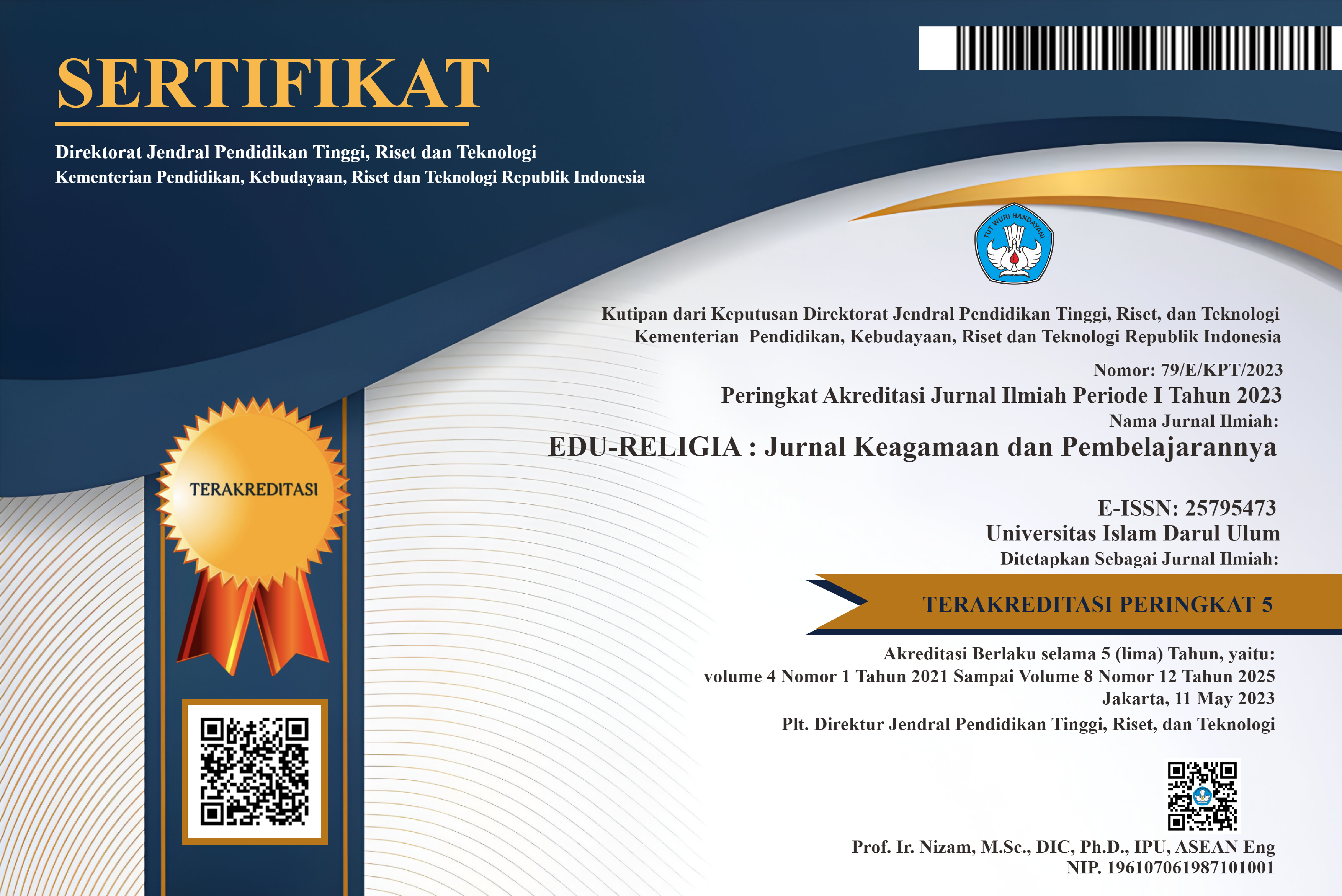Implementation of Blended Learning in PAI Subjects to Increase Student Engagements in High School
Abstract
As technology develops, learning models have progressed, and learning in class and online (online) has experienced significant developments. The combination of the two is called a blended learning model. Because the learning process cannot be separated from the touch of technology. In line with that, learning achievements in this technological era are carried out by updating the quality of learning, helping students develop participation, personalizing learning, emphasizing project or problem-based learning, encouraging collaboration and communication, increasing student involvement and motivation, cultivating creativity and innovation in learning, using appropriate learning tools, and designing learning activities that are relevant to the real world. So, this research aims to discover the meaning, components, composition, characteristics, types, implementation, and advantages and disadvantages of the blended model. The author of this research used the literature study method. In the blended learning model, there are six stages. The first stage is determining the teaching materials. Second, the design of the blended model used must be determined. Third, determine the online learning format. Fourth, carry out design trials. Fifth, apply the model that has been designed and finally evaluate. The author used the RPP for Class XII odd semester PAI subjects from SMAN 1 Prambanan to implement these six stages as a sample. In general, the results have met the evaluation criteria starting in terms of ease of navigation, format/appearance, applicability, cost-effectiveness/value, and content in accordance with the learning objectives. However, there is some material whose study content is not complete.
Downloads

This work is licensed under a Creative Commons Attribution-ShareAlike 4.0 International License.








